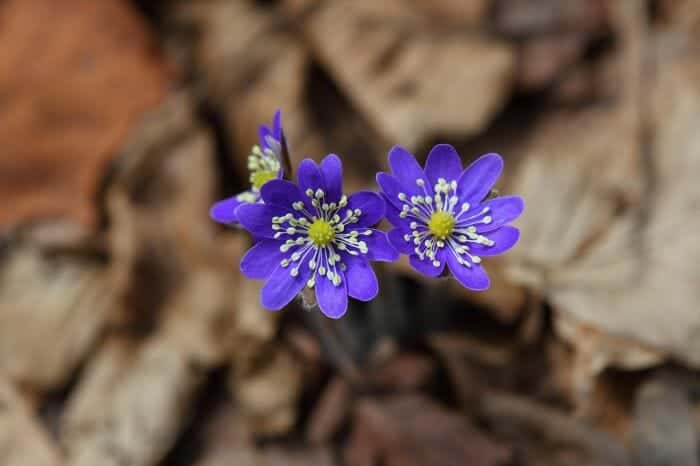
Hepatica is a genus of the Ranunculaceae family indigenous to regions in the Northern Hemisphere. This genus comprises around 7 species[1] of herbaceous plants. This spring-flowering perennial is also known as liverwort or liverleaf.

The popular name comes from the leaves’ supposed resemblance to the human liver, which has 3 lobes. Due to this superficial similarity, it was once believed to have medicinal properties for liver disease.

However, although the foliage was once used in patent medicines and natural remedies, they appear to have no chemical constituents of documented medicinal value. In addition, they may be irritating or toxic to the skin if ingested.

Hepatica can reach a height of around 12-inches. The glossy dark green leaves are leathery and smooth, with thick hairs on the underside of the leaf.

The leaves are borne by long petioles that protrude from the crown. Each wide leaf is around 2-inches wide, with the three lobes rounded or pointed depending on the species. The leaves are evergreen and turn reddish to purple in fall.

The ½-1-inch-wide flowers have numerous elongated blue, purple, lavender, pink, or white sepals (no petals) surrounding many central stamens with yellowish anther tips.
















